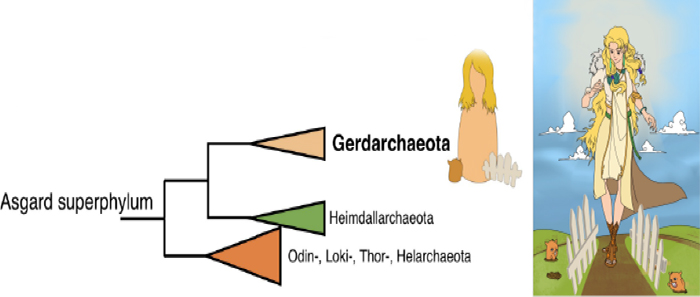Recently, Professor Meng Li’s Group from IAS published a research paper titled Diverse Asgard archaea including the novel phylum Gerdarchaeota participate in organic matter degradation in Science China Life Sciences. This study firstly reports the presence of the sixth phylum within Asgard archaea – Gerdarchaeota. The corresponding author is Professor Meng Li, and Dr. Mingwei Cai and Dr.Yang Liu are the first authors. This work is achieved under the cooperation of Shenzhen University, the University of Bremen and the Hong Kong University.

Archaea, as an important component of microorganisms, play an extremely significant role in the evolution of life on earth. Asgard archaea is a newly identified archaeal superphylum, which encompasses Lokiarchaeota, Thorarchaeota, Odinarchaeota, Heimdallarchaeota, and Helarchaeota. They are regarded as the closest relatives of Eukarya, and an in-depth understanding of this group might help us decipher the origin of Eukarya.
This study reconstructed 15 Asgard archaea metagenome-assembled genomes (MAGs) from the coastal sediments of China, including a novel phylum-level linage, which is phylogenetically distinct to other Asgard archaea. Genomic inference suggests that MAGs in this group are metabolically different from other members of Asgard archaea, as they are equipped with genes encoding facultative aerobic respiration, the light-sensing gene heliorhodopsin, and those for a mixotrophic lifestyle. Hereby, this lineage is proposed ‘Gerdarchaeota’, after the Norse God ‘Gerd’. Additionally, transcriptomics showed that most of the identified Asgard archaea are capable of degrading organic matter, including peptides, amino acids, and fatty acids. Overall, this study broadens the diversity of the mysterious Asgard archaea and provides evidence for their ecological roles in coastal sediments.
This work was supported by the grants from the Natural Science Foundation of China, the Science and Technology Innovation Commission of Shenzhen, and the Department of Education of Guangdong Province.
The paper is available under the link http://engine.scichina.com/doi/10.1007/s11427-020-1679-1


